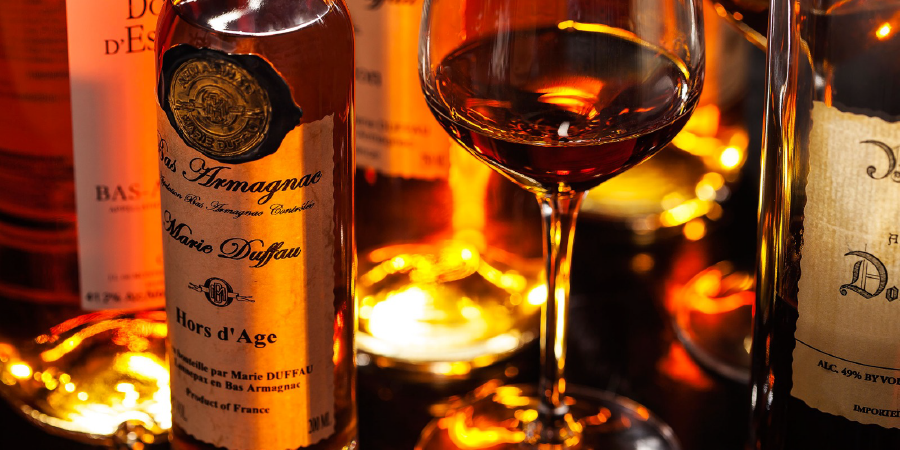Imagine we are back in the year 2010 when whisky wasn’t such a fashionable drink and it wasn’t so “cool” to say you were a whisky drinker. What would our purchasing power be like, compared to what it is today? Whisky was just as good a product then as it is now, but why the poor take-up rate then? Well, it wasn’t trendy back then!
The Humble Armagnac
So, if you haven’t already invested in your private stash of good whiskies in those early days, you have missed the boat and you are left with making purchases at today’s high prices. That’s what comes with being a follower of trends. Why not let your own palate lead you? There are many lesser-known or less fashionable beverages that deserve to be seriously explored, notably the humble Armagnac.
Being the oldest French brandy, one would expect lots more interest in and awareness of Armagnac internationally. However, with so much oxygen being sucked up by Cognac’s massive marketing budgets, it’s no wonder why we hear very little of this very rich and flavoursome beverage. That being said, Armagnac should not be assessed on that most overused term, “smoothness”, which says nothing about flavours, richness, persistence or balance – qualities that define a drink.
The Production of Armagnac - Terroir Does Matter
Even at its lowest grade classification, Armagnac offers very rich mouthfuls of complex tastes and this can in part be attributed to the single distillation Alembic still that is used for better-quality Armagnac. It may surprise many that cheaper grades of Armagnac are made using double distillation stills similar to those used in producing whisky. The Alembic stills allow for far more reflux or condensing within the single still which can produce a more refined final distillate. The richness of the distillate can be credited to its very low ADV% of around only 65%. Depending on the types of stills used, whisky distillates can reach an ABV% as high as 97.5%. This very pure alcohol is almost neutral in flavour as it will only contain 2.5% flavoured water compared to Armagnac that is distilled to a low 65% ABV. Remember, the part that is not alcohol but water packed with flavours and character.
As a brandy, Armagnac is a grape-based spirit. In the first stage of the process, ten grape varietals are permitted for the fermenting of their juice to wine. There are no red varietals in the list, but Mauzac Rosé is permitted. Traditionally, Baco 22A, Ugni Blanc, Folle Blanche and Colombard are the dominant varietals. With a number of varietals at play, the concept of terroir has a significant role for Armagnac.
The rules of production are strictly controlled by the Bureau National Interprofessionnel de l'Armagnac (BNIA) who are the custodians of the Armagnac brand and the watchdog over its quality. Additives such as sugar and acids are not permitted to overcome shortcomings in the wine that is to be distilled. Also, sulphur dioxide cannot be used to preserve the freshly fermented wines. This influences producers to distil their wines early which will result in a cleaner and fresher distillate. Colouring, which is permitted in many whisky producing nations, is not permitted – not that it matters in Armagnac as productions are small with little need for standardising batches from year to year.
The Myth of Armagnac Classifications
Armagnac’s grading classifications are similar to that of Cognac starting with ***, VS, VSOP, Napoleon, XO and Hors d'âge. Armagnacs can also be bottled with age statements, where the declared age is that of the youngest in the blend. If there is a Vintage stated, it is that of the year of harvest. Cask strength versions termed Brut de Fût are also produced in some of the more established houses.
The three main AOCs of Armagnac are Bas-Armagnac, Haut-Armagnac and Armagnac- Ténarèze which cover 67%, 1% and 32% by area under cultivation respectively. Bas-Armagnac is far more ubiquitous with far less Armagnac-Ténarèze being distributed overseas. If Armagnac in general is considered a richly flavoured brandy, then Armagnac-Ténarèze is a step up being even richer and more full-bodied and generally requires longer ageing, but the wait is certainly worthwhile.
Armagnacs that are blends of more than one of the above AOCs is classified simply as AOC Armagnac. As with malt whiskies that are not single malts, AOC Armagnacs are by no means inferior products as the combination of different terroirs may actually contribute to complexity and depth of flavours. Since 2005, a fifth category, Blanche Armagnac AOC was introduced for a lighter and refreshing unaged style of Armagnac. However, once declared as a Blanche Armagnac, it cannot be converted to an aged Armagnac in cask even though demand for the product is poor.
It is interesting to note that the wood ageing of Armagnac was the unexpected result of the British control of still wines passing through Bordeaux. Gascony, the heart of Armagnac, being further down south from Bordeaux along the River Garonne, had the sneaky Dutch scheming for a loophole around the free passage of trade-in unaged Eaux-de-vie. The issue was that Armagnac then in its unaged form was very inconsistent. This problem turned into a blessing in disguise when the excess unaged stocks morphed into a far superior spirit after storage for a long period in wood, and thus a new category was born.
Open Recommendation from the writer:
Although not a trend-setter at the moment, Armagnac prices are likely to go the way of whiskies in the not-too-distant future. Much credit should be given to whiskies for paving the way for the umbrella of brown spirits. This can be seen with the increasing interest and demand for aged rums and Tequilas. It’s only a matter of time before the spotlight will naturally fall on brandies. With current production quantities being small, price hikes are a real possibility.





